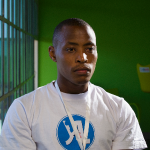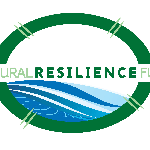 Laur Hesse Fisher Jul 24, 2014 08:47 |
This proposal has been moved by an Administrator from the "Shifting Behavior" contest to the "Adaptation" contest.
|
 Climate Colab Aug 6, 2014 08:15 |
Thank you for your submission to the Climate CoLab adaptation contest. Looking at the TransitionKW website, it's clear that you have already done a lot of good work collecting information and translating it into workable actions that local residents could take. That said, the specific proposal for this Climate CoLab contest is missing a concrete focus. To be really compelling, you could present something beyond the basic improvements to the website and plans to distribute hard copies of the guide. The judges suggest laying out a vision for how you can totally transform your approach to raising awareness and mobilizing action. More important than focusing on the website is developing a well-thought-out strategy for engaging people. There is a considerable body of research that shows that just giving people better information isn't enough to change their actions. Social pressure and values are much stronger motivators. So, for example, are there ways to game-ify the website/toolkit, or add a social marketing strategy to the proposed outreach (both on-line and physical)? More creative thinking around these issues could yield some interesting results. Additionally, the judges were wondering where the prescriptive ideas in the toolkit came from, as it is a bit surprising that your focus is on actions that people can take individually. Adaptation is often considered a collective challenge, where whole communities need to agree on how to assess risk, how to evaluate possible risk management options and how to make decisions about the trade-offs involved. Can the toolkit also promote collective adaptation efforts, and if so, how? Where are people in the community involved in assessing climate risks, and considering which possible actions (individual and collective) would be the most effective ways to enhance resilience and overcome vulnerabilities to climate risk? There are many toolkits out there, including ones by ICLEI, so please consider why a community should take what is in this particular toolkit seriously and remember that toolkits need to be contextualized locally. Rather than just building more tools and disseminating them, your team can think more about how communities choose which tool to use and how to mobilize people around them. Congratulations on advancing to as a semi-finalist, and the adapation contest team looks forward to seeing your revised proposal for the final submission.
|
 Victor Blanco Aug 26, 2014 03:36 |
I wish you the best! Please, check my proposal in Waste Management Contest, named "REACC"; and I would apreciate your support.
|
 Climate Colab Sep 3, 2014 12:24 |
Thank you for submitting a final proposal. It would be good to further clarify how you plan to engage key players and make CRITC / CRIS a reality. Your proposal outlines many activities and has a large budget – more detail could be provided on how the funding would be raised and leveraged to make an impact. As you move forward with your proposed actions, you are strongly encouraged to continue using the judges’ feedback to help guide your work. There is always room for improvement, and the judges would like to see you respond more to the questions and comments that were raised during semi-finalist selection. For ease of reference, the judges’ initial suggestions have been summarized by a contest fellow below:
Suggested improvements summary:
- Clarify plan of action
- Re-write ‘proposed action’ and ‘who will take these actions’ sections to outline how to make CRITC and CRIS a reality
o How does the team plan to engage key players?
o Key collaborators and opportunities?
- Identify potential hurdles and how to address them
- Other ways of creating incentives beyond subsidies and tax credits?
- Clarify strategy for getting subsidies and tax credits approvals at public and legislative levels
- Articulate good financial mechanisms for this type of thing and international examples of it working
Congratulations on a strong proposal, and the adaptation contest team wishes you the best of luck!
|
 Hemant Wagh Sep 5, 2014 12:41 |
If you could consider requesting your future clients to store throughout the year the seeds of fruits they eat at home and spread those seeds, after commencement of Mansoon, the rainy season, on to unused land in & around the city, town, village, as an activity that would help improve green cover! Rather than wasting the fruit seeds by letting decay, this would help grow fruit-bearing trees as well. Following is a link to such a proposal.
https://www.climatecolab.org/web/guest/plans/-/plans/contestId/1300103/planId/1310401
This will be useful both for mitigation & adaptation.
|
 Eric Kaufman Sep 15, 2014 01:29 | Proposal contributor
NRF is excited to be selected a finalist in this endeavor. We have reviewed feedback from the judging panel and provide you the following commentary. We have made strides in advancing the concept of funding subsidies and tax credits and hope to enact a pilot program on a local, small scale basis as a testing ground for these making these concepts a reality.
The success of advocacy organizations in instituting large-scale change through legislative action, as documented by the National Health Council, teach us that The NRF’s efforts in organizing its efforts along the following road-map is strategic: (1) establish a working group (for us this is an advisory group), (2) develop a clear objective, (3) develop strategies, (4) secure resources (including grassroots support, support from policymakers and field experts, media spokespeople, financial support, political advocacy, communications materials and volunteers) and (5) implement campaign.
Establish an Advisory Group: In our timeline, we envisioned establishing a world class advisory board during the third stage following passage of a state and/or federal legislation to approve the application of tax credits to sustainability/resiliency. We want to put that advisory board in place earlier, as an immediate, short-term objective. This board can help us develop our strategies, secure resources and implement the campaign. Our strategic discussions with well-placed individuals from city, state and federal agencies, highly visible foundations and lobbying groups, and environmental organizations, allow us to quickly put this board in place.
Develop a Clear Objective: As we pursue two forms of financing initiatives through CRITCs to enable municipalities to undertake and complete resiliency infrastructure projects and CRIS provided by the private sector to assist private owners to undertake sustainability/resiliency retrofits, we intend to set at the center of our efforts and message the passage of state legislation authorizing CRITCs. We think, this is an easily stated and clear objective with the following benefits. First, this gives the public (the ordinary taxpayer) an opportunity to fund public works resiliency projects and receive tax credits aligns with the current trend in participatory activism. Citizens can vote with their wallets and later through their tax returns as to their preferred approaches to adaptation. This is the ultimate form of democracy. Second, state legislation already exists allowing for tax credits within certain areas of sustainability such as solar energy. This long-standing precedent for tax credits and existing legislation means that amendment-by-legislation is feasible as a far easier method than the enactment of new legislation. Third, clear, compelling examples in the tri-state region exist that highlight the serious effects of extreme climate events on lives, property and critical services.
Develop Strategies: Instituting an advisory board is vital as it will provide us with a valuable resource in strategy development. At the same time, we may have the opportunity to test and apply our messaging, test the appetite for tax credits, and build and develop our advisory board—all on a small scale—as proposed in our work with the town of Piermont. So while the solutions may be local and specific as in the case of the town of Piermont, we can test the public’s interest in addressing resiliency in a holistic and comprehensive manner on a state and regional level. The pilot, local approach will, as it must, also frame resiliency within a larger context. We expect that this approach will generate for the locality more resources and attention while also generating a groundswell of support that should occur with the “ah-ha” moment when other communities see how they too have been, or may be affected. In this way, the pilot begins the process of creating the space and vision within which the public can be educated and activated; alliances built and whose efforts harnessed; and securing the sponsorship of politicians as they become aware and moved to act.
Politicians are increasingly taking a stand on environmental causes. Our strategic outreach may include identifying and contacting those politicians whose track record and platforms align with The NRF’s. One source can be the Sierra Club’s Top 100 ranking of politicians who have been active in working to pass environmental legislation. Some of these leaders may be appropriate members of our advisory board as well as sources for securing resources and promoting our message.
Securing Resources: This has been one of the most challenging aspects of our work. Securing financial resources to fund The NRF’s efforts during what can be a protracted process is essential. Still we believe the establishment of an advisory board, the undertaking of our efforts in a staged process vis-a-vis a pilot project, and our ongoing development of our messaging will all be critical in securing resources. The messaging we have developed (and are developing) will be tailored to the means, method and platform of delivery (such as online efforts in blogs, linked in and facebook postings; offline efforts through magazines, newspapers, radio and television; and participation in live events). Our existing communications materials that include a white paper, a business plan of our related entity (Built Environment), executive summaries, a blog and proposals provide a strong communications basis. Consistently we have been describing our mission, the communities we serve, the benefits of our advocacy and how our efforts align with private sector interests. We have also just retained the efforts of an experienced grant writer who was instrumental in obtaining funding for the New York City Energy Efficiency Corporation.
|
 Osero Shadrack Tengeya Sep 17, 2014 04:14 |
Hi NRF,INC and your friends, kindly consider voting for my proposal shown on this link.
https://www.climatecolab.org/web/guest/plans/-/plans/contestId/1300206/planId/1002
Thanks.
|
 Anne-marie Soulsby Sep 23, 2014 04:28 |
Hi The NRF Inc,
Please consider voting for my proposal, https://www.climatecolab.org/web/guest/plans/-/plans/contestId/1300801/planId/1309001
Good luck with your entry!
Asante/Thank-you
@conserveaction
|
